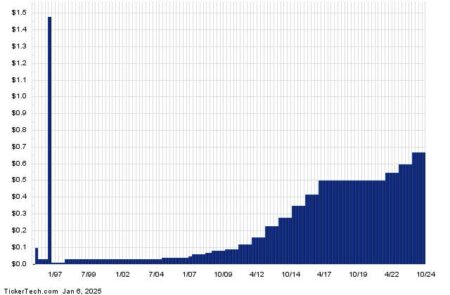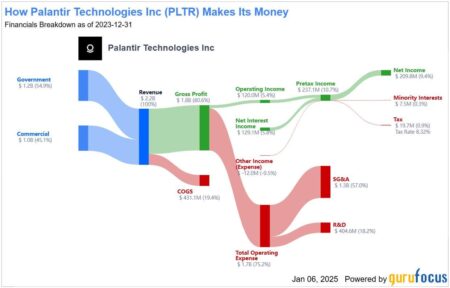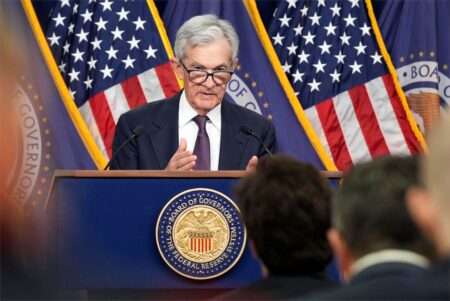Ever wonder how Elon Musk avoids investment regrets even with high-stake decisions? In the realm of investments, it’s easy to gauge success based just on the sheer volume of agreements or the dizzying sums of money put in place. But as Elon Musk’s open analysis of “unregretted seconds” reminds us, not all hasty actions produce desired results. When developing your investment plan, the quality of every investment should take front stage rather than the number. This strategy guarantees that any investment not only could be quite profitable but also fits your financial objectives, risk tolerance, and investing schedule. After all, a careful choosing procedure helps to avoid a future full of regretful rushes, missing details and ultimately becoming part of a speculative financial bubble.
The appeal of trendy assets has enthralled investors’ wallets and imaginations repeatedly across history. From the Dutch Tulip Mania of the 17th century to the dot-com bubble of the late 1990s and most recently, the explosive rise and fall of cryptocurrencies like Fartcoin, these financial events have shown a common pattern of fast expansion followed by usually catastrophic collapses. This cyclical character of investing fads not only illustrates the continuous over-optimism in human financial behavior but also emphasizes the great influence these trends can have on individual investors and the whole economy. Understanding history helps us to equip ourselves with insights to negotiate the sometimes seductive but possibly dangerous seas of fashionable investment prospects.
Historical Examples Of Speculatve Financial Investing Bubbles. What Can We Learn?
Early 17th century tulip bulbs in the Netherlands evolved from an expensive curiosity to a sought-after commodity, sparking the first significant financial bubble. Tulips traded on stock exchanges and special markets as prices skyrocketed. Some bulbs sold at the height of the mania for six times the average annual salary. This craze came to a head in 1637 when the market collapsed unexpectedly, ruining a lot of investors. The spectacular fall acted as a warning story about market volatility and speculation.
Under a deal with Spain, the early 18th-century South Sea Company was given a monopoly to trade with South America. Speculators raised its possible profits while share prices surged. The corporation entered government debt with great promise for rewards, which stoked an even more speculative frenzy. Realization dawned in 1720 that the bubble burst and that the earnings fell far short of expectations. Financial devastation among thousands of investors, many from the aristocracy. This highlights the risks of illogical speculative excess.
The Dot-com Bubble driven by the fast expansion of the internet and new technology, investments in internet companies surged in the late 1990s. Investors were ready to support anything connected to the dot-com industry, which drove inflated valuations for firms lacking even clear strategies to turn a profit. Reality set in motion by 2000 as market mood changed and income fell short of expectations. The fall of the bubble caused great losses for investors and company collapses, which emphasizes the vital relevance of basic business measures in investing decisions.
These episodes highlight the cyclical nature of investment fads as well as provide insightful analysis of the consequences of divorcing financial aspirations from economic reality. Every occurrence changed financial history and taught the next generations of investors the dangers of chasing price compared to value.
Psychological Drivers Of Speculative Investing And What To Avoid
Greed and Fear of Missing Out (FOMO) are strong emotional motivators that can force investors to enter high-risk businesses. The attraction of rapid, large profits can skew judgment and cause investors to ignore the inherent dangers of a certain investment. In a rising market, when news of significant profits by others can create a sense of urgency and a wish not to be left behind, this fear of missing out on a great chance is especially strong. These feelings can lead to illogical purchasing, which drives prices to unsustainable heights until the natural correction takes place.
Herd mentality is very important in magnifying financial trends in which the supposed safety in numbers can mislead people about the soundness of an investment. More people invest, others are inclined to follow, often without doing their necessary research. Confirmation bias, where investors search for data supporting their choice to join the majority and ignore warning signals, helps to perpetuate this behavior. Investors driven by peer influence and the need to fit in may make judgments based more on group behavior than on wise financial judgment, hence creating investment bubbles until they finally explode.
These psychological elements taken together help to create and spread financial bubbles as well as to cause their ultimate collapse, therefore costing many investors large losses. Investors seeking more disciplined and logical financial decisions must first understand these emotional factors.
Potential Investing Bubbles
- With huge swings in market values drawing worldwide attention, cryptocurrencies have become the ideal speculative bets of recent years. For example, the less-known digital currency Fartcoin witnessed explosive value increase in a short period of time due to viral social media exposure. This trend reminds me of more well-known cryptocurrencies like Bitcoin, which have shown extreme volatility as people rush in during price bubbles and quickly leave. Such speculative conduct underscores the dangers connected with investing depending on hype instead of a thorough knowledge of the basic technology and market dynamics of the asset.
- Special Purpose Acquisition Companies (SPACs) have proliferated and represent yet another modern financial trend rife with risk and volatility. Designed to merge with private corporations, SPACs are effectively blank-check businesses brought public without the rigors of a conventional IPO. While businesses seeking fast public finance can gain from this accelerated procedure, investors run more danger. Many SPACs, including Nikola and Lordstown Motors, which struggled with operations and finances following a merger, have underperformed and highlighted the possible risks associated with this investment path.
- The quest toward sustainability has spurred a boom in investments in green energy technologies. Although the expansion of the sector is essential for environmental sustainability, occasionally the rush results in early investments. Many anxious to profit from the next great green technology have lavished money into dubious businesses like Solyndra, which went bankrupt despite significant government support. Such situations underline the need to do extensive due diligence and realizing the long-term survival of investments instead of just following trends.
Strategies To Avoid Falling For Investing Fads
A strong foundation in basic analysis is among the best defenses against the attraction of investment fads. Emphasizing real data above market hype, this strategy entails a comprehensive assessment of a company’s financial situation, market posture, and growth potential. Knowing the inherent worth of an investment enables investors to make wise selections based on long-term profitability and stability rather than transient trends. Analyzing whether the price of an investment is justified or inflated by speculative excitement depends on tools including debt levels, price-to-earnings ratios, and income growth.
Another main tactic in protecting your portfolio from the volatility of fad investments is diversification. You can lower their risk of major losses from any one investment by diversifying their investments among several asset classes, sectors, and locations. This approach serves to lessen the effects of sector-specific downturns and investment bubble busting. A well-diverse portfolio guarantees that the loss or underperformance of one investment does not compromise general financial situation by balancing risk.
Have the long-term view. To resist the clamor and temptation of popular assets, one must have a long-term view of investing. Long-term investors are more likely to gain from compound growth of sound investments than they are influenced by fleeting market swings. This strategy calls for endurance and a will to keep the course even if transient trends seem to be quite profitable.
You may create a strong portfolio that resists the vagaries of market trends and speculative financial bubbles by including basic research, diversity, and a long-term view into your investing plan. These vital instruments not only protect you from the dangers of ephemeral trends but also help you to realize steady financial development. Recall that smart, intentional investments, not following the next great idea, are the road to true riches. Armed with these techniques, you will confidently and resiliently negotiate the investment terrain. Lastly remember, take Elon Musk’s advice and apply it to investing.
Read the full article here
















